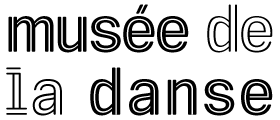To change marshalling yards
Disordered clouds of anonymous characters, schematic figures captured within the circuits of a closed system – silhouettes motioned by arrows and lines – positioned in the patterns of an infinite network. León Ferrari’s Héliogravures confront us with a distressing universe, functionalized to the point of absurdity. His wandering figures form “vanities”: the allegorical reverse of those town planners’ drawings, which present an aseptic version of reality. Behind the modernist dream of a standardized happiness, León Ferrari reveals a kafkaïan nightmare.Endowed with a singular polysemy, ultrarealist abstractions bearing multiple meanings, those works lend themselves naturally to re-reading, to the “shifting of the creative activities”. As Henri Michaux explains it in connection with the passing from writing to painting: “The shifting of the creative activities is one of the strangest internal journeys that one can make. Strange de-congestion, putting to sleep of one part of the head, the talking one, the writing one (part, no, connection system rather). One changes marshalling yards”. To apply to the works a different “connection system”, to put them through other intensities, other formal proceedings, to give them a mode of visibility that displaces the commentary – this could be an(other) definition of the Dancing Museum. Drawings form arborescences. Bodies move along, cross each other, diverge. The readings bifurcate: the museum as marshalling yard. Extending those ramifications, the Dancing Museum has proposed to choreographer Julien Jeanne – himself at the border between several territories, installation, performance, paedagogy – to activate those scores. Julien Jeanne seized on them to imagine a series of 5 performances, allowing to unfold several dimensions: oppressive neutrality, organization both rational and delirious of space, cancellation of differences, of dimensions, disappearance of orientation. Such principles guided the carrying out of the work, in the form of workshops organized week after week with 12 amateurs. A principle, a time, a performance. Apprenticeship, sharing, putting into circulation – and action. A series of axioms, producing gestures, punctuated by rendez-vous. An original succession of stage events, enabling one to see again, to decipher the works in a different way.
To draw - to dance / To dance - to draw
Julien Jeanne’s first performance laid down a scene used as starting point, some of whose elements reminded of León Ferrari’s great frieze exhibited in the room – a labyrinth where figurations of space (tables, corridors, toilet seats, public urinals) are travelled through by small identical figures, with here and there the eclosion of organic or vegetal shapes – nervous systems, roots, nervures...In this solo, the objects that made up the scene – a heap of leaves, a tree, toilets, rolls of scotch tape – called to mind a dailylife sent back to its disturbing strangeness. A «?vie mode d’emploi?» without memory or narration, a white prison world, inhabited by a sole motionless figure. The next performances multiplied this bewildered body by 12. each of them starting from a composition principle, declining it, stretching it, they progressively saturated the space with the same gestures and the same figures – to exhaustion. Echoes appeared from one to another, images insisted, like the one of the lying down, recumbing figure – neutral gear among those figures in constant circulation. The sound texture – created by Damien Marchal from noises of scanners – moved back and forth from one performance to the other, like an endless drone: the oppressing noise of image reproduction.In connection with the standardization of the journeys, the postures, the movements, revaled by the Héliogravures (which send back perhaps to the eugenist utopia of the City of the sun as described by Campanella), each of those performances exhibited a standardized individual, a “unidimensional man” the prey of repetitive tasks – with sleep (or death) as only vanishing point. The principle of waiting, of suspense, created by this continuous chain of events – that no diverging action ever came to interrupt – placed the public in a quasi contemplative attitude. No development to cling to, no rupture: the bodies performed their tasks, reabsorbing themselves again inside the system that animated them. Sound and light stressed those gestures by moments of rupture – a sudden flash, a black-out, the sound of the scanner starting again – but those ruptures, like false clues, remained independant of the action. Unruffled, the bodies went along with their strange procession. With this system on the borderline between installation and choreography, the spectators were free to wander inside the space, to change points of view, to look for an angle that would reveal some meaning, or to imagine a clue on León Ferrari’s frieze that would allow to interpret the whole. But as in a strange mirror, they were sent back to the pure circulation of those characters of flesh and paper – ambiguous figurines of our condition. With the cycle Héliogravures the “value of exhibition” carried by a creation – wether it be pictorial, textual, or performative – was brought into light: the reciprocal interpretation wich becomes established between the work, the place that shows it and the interpreters who take possession of it. The Choreographic centre exhibiting a work that exhibited it. A guest choreographer overexposing in turn the exhibition. To exhibit oneself in the plural.For the first time, the Dancing Museum saw itself interpreted as a “museum”, housing objects – but nevertheless still functioning as a “prism”: without ceasing to interlace performances, workshops, artistic objects, and discourses about their weaving.
1. Henri Michaux : Peindre, in Passages.
Gilles Amalvi
